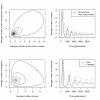The struggle for life of the genome's selfish architects
- PMID: 21414203
- PMCID: PMC3072357
- DOI: 10.1186/1745-6150-6-19
The struggle for life of the genome's selfish architects
Abstract
Transposable elements (TEs) were first discovered more than 50 years ago, but were totally ignored for a long time. Over the last few decades they have gradually attracted increasing interest from research scientists. Initially they were viewed as totally marginal and anecdotic, but TEs have been revealed as potentially harmful parasitic entities, ubiquitous in genomes, and finally as unavoidable actors in the diversity, structure, and evolution of the genome. Since Darwin's theory of evolution, and the progress of molecular biology, transposable elements may be the discovery that has most influenced our vision of (genome) evolution. In this review, we provide a synopsis of what is known about the complex interactions that exist between transposable elements and the host genome. Numerous examples of these interactions are provided, first from the standpoint of the genome, and then from that of the transposable elements. We also explore the evolutionary aspects of TEs in the light of post-Darwinian theories of evolution.
Reviewers: This article was reviewed by Jerzy Jurka, Jürgen Brosius and I. King Jordan. For complete reports, see the Reviewers' reports section.
Figures



References
-
- Fox Keller E. A feeling for the organism. New York: Owl Books; 1983.
Publication types
MeSH terms
Substances
LinkOut - more resources
Full Text Sources

